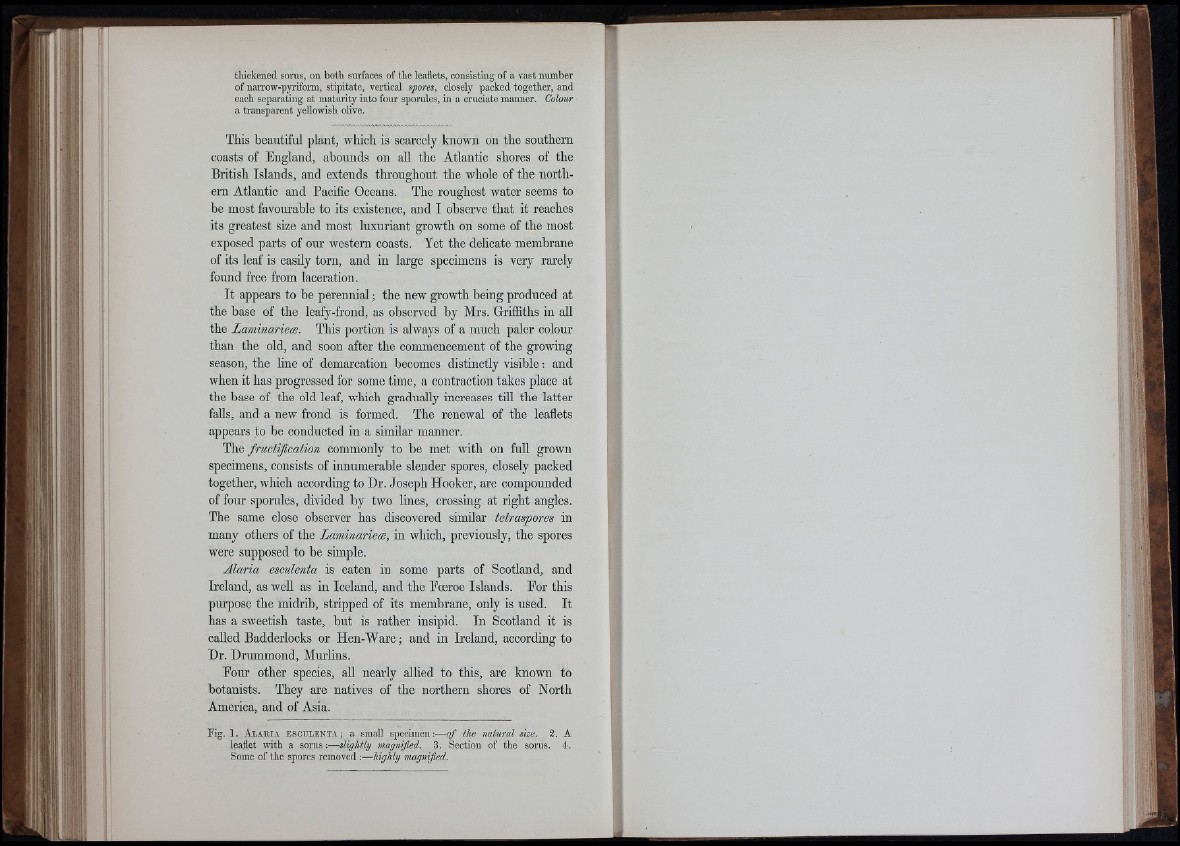
tliickened sorus, on both surfaces of the leaflets, consisting of a vast number
of narrow-pyriform, stipitate, vertical spores, closely packed together, and
each separating at maturity into four sporules, in a cruciate manner. Colour
a transparent yellowish olive.
This beautiful plant, which is scarcely known on the southern
coasts of England, abounds on all the Atlantic shores of the
British Islands, and extends throughout the whole of the northern
Atlantic and Pacific Oceans. The roughest water seems to
be most favourable to its existence, and I observe that it reaches
its greatest size and most luxuriant growth on some of the most
exposed parts of our western coasts. Yet the delicate membrane
of its leaf is easily torn, and in large specimens is very rarely
found free from laceration.
It appears to be perennial; the new growth being produced at
the base of the leafy-frond, as observed by Mrs. Griffiths in all
the Laminariea. This portion is always of a much paler colour
than the old, and soon after the commencement of the growing
season, the line of demarcation becomes distinctly visible; and
when it has progressed for some time, a contraction takes place at
the base of the old leaf, which gradually increases till the latter
falls, and a new frond is formed. The renewal of the leaflets
appears to be conducted in a similar manner.
The fructification commonly to be met with on full grown
specimens, consists of innumerable slender spores, closely packed
together, which according to Dr. Joseph Hooker, are compounded
of four sporules, divided by two lines, crossing at right angles.
The same close observer has discovered similar tetraspores in
many others of the Laminariem, in which, previously, the spores
were supposed to be simple.
Aiaria esculenta is eaten in some parts of Scotland, and
Ireland, as well as in Iceland, and the Poeroe Islands. Eor this
purpose the midrib, stripped of its membrane, only is used. It
has a sweetish taste, but is rather insipid. In Scotland it is
called Badderlocks or Hen-Ware; and in Ireland, according to
Dr. Drummond, Murlins.
Pour other species, all nearly allied to this, are known to
botanists. They are natives of the northern shores of North
America, and of Asia.
Kg. 1. A l a r ia e s c u l e n t a ; a small specimen:—o f the natural size. 2. A
leaflet with a sorus :— slightly magnified. 3. Section of the sorus. 4.
Some of the spores removed :— highly :
i l